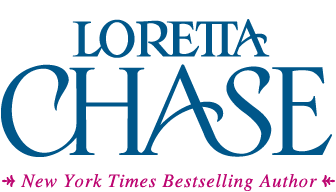Greenwood Map of Kensington 1830. Red line is Olympia’s and Ripley’s route from Newland House (Campden House)
A previous post about A Duke in Shining Armor described my husband and my tracking Olympia’s escape route.
This time I thought it would be fun to take a closer look at the house she ran from, Newland House.
Seeking a wedding locale near but not in 1830s London, I discovered Campden House on a map of Kensington. It belongs to one of many areas that are now part of London but were rural retreats then. An online search turned up black and white engravings of a Jacobean mansion built more or less in the style of Holland House (more on that here, here, and here). That is to say, it had towers and turrets and lots of windows, and sprawled with a pleasing untidiness over a large estate. Because I intended to send my characters southwestward, its location was ideal: between Holland Park and Kensington Gardens, and a short distance from the Kensington High Street, where Olympia and Ripley would find a hackney stand.
Like other great houses, Campden House went through a series of transformations. These are described in Chapter IV of Kensington Picturesque and Historical, and explains my mentioning Queen Anne in my story. The chapter, which includes a rather poignant account of the queen’s one surviving son, describes the house’s interior, the 1862 fire*, and the rebuilding some years later. The second incarnation was demolished at the turn of the 20th century.
Campden House c. 1860, south-east view from the garden. Coloured litho by Edwin Smith.
But once again, though the book was completed, I still wanted to know more. Shortly after tracing Olympia’s route, my husband and I went to the Kensington Central Library, where Dave Walker, archivist/librarian/blogger, generously supplied mountains of material from the archives, and helped us—my husband, actually—scan and photograph dozens of images, including one describing the house’s location: “Old Campden House and its ground stood approximately within the square formed by the Sheffield Terrace (on the north) + Campden House Road (on the west) Gloucester Walk (on the south) and Church Street (on the east).” This helped us get our bearings.
“This photograph from the early 1900s shows the remains of tower that stood in the grounds of Campden House.“— Library Time Machine.
As many of you know, I have as much fun doing historical research as creating the story. One feeds the other. A Duke in Shining Armor inspired other investigations, as did my visit with Dave Walker. These in turn have inspired scenes in my work-in-slow-progress. You can expect more nerdy history material in the months to come.
Following are some of my sources, in case you’d like to delve more deeply into the history.
More about Campden House , with a detailed description of the Pitt estate, at British History online.
Description from The Old Court Suburbs: Kensington, in Old Kensington, in Old and New London: Volume 5.
Campden House after the fire.
Interiors are scarce. This is the schoolroom at Campden House, coloured lithograph by Charles Richardson.
You can find the house on this 1841 map of Kensington & Chelsea.
Here at Mapco is a Victorian era (some 30 years later) map segment you can enlarge considerably. By this time the area is considerably more populated.
*A better account of the fire begins here on page 773 of Chambers’s Journal, Sixth Series, Vol X December 1906 to November 1907.
The photographs, including those of materials from the Kensington Central Library, are the work of Walter M. Henritze III. Our thanks to Dave Walker and Isabel Hernandez for giving so generously of their time, for sharing so much fascinating material, and for their patience.










